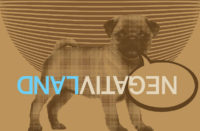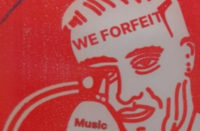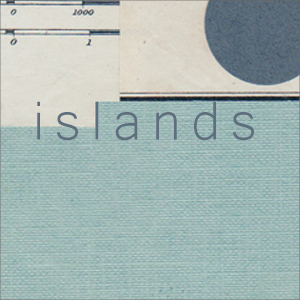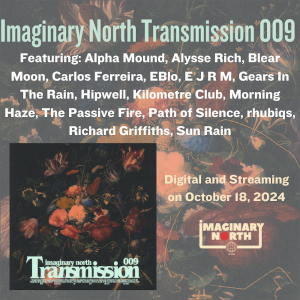Elsewhereness revisited is an occasional feature documenting the drift at the margins: ambient gasbagging and blurb blah, ’tube-d, ’cloud-ed ’n’ ’camp-ed up, complete with new companion mix, Elsewhereness revisited #17.
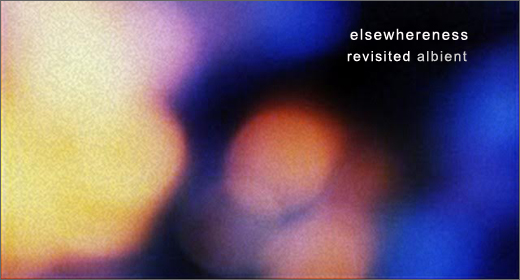
Documenting the (ambient) drift at the margins
First up, Solitary Hymns, a compilation from Berlin’s Vaagner/Vaknar that took just seven days from source to release. Conceived as an aural chronicle of this period, some tracks direct sonic responses, others unreleased, lent new resonance by current context. The tone is set by the buoyant strings of Theodore Cale Schafer‘s “Mansfield” and the serene guitar swathes of Anthéne’s “Light Years,” then sustained by an [e/a]ffect-heavy tape-loopery triptych from Benoît Pioulard, øjeRum, and Stijn Hüwels, riding on reminiscence. Forest Management is shrouded in heavy auditory fog, Hakobune’s cloaked in reclusion, and Zen Zsigo casts a pall of dead calm and angst before Oberlin‘s final meditation, bespeaking dusty rooms with opaque windows. It’s nyp in line with Vaagner’s wish for easy access to those looking for brief escape from uncertainty, loneliness or anxiety.
With its CD release schedule on hold due to Covid 19, Whitelabrecs launches Home Diaries, a various artist series of releases created under lockdown and physical distancing. Digital only to help the label tick over, it features a recurring polaroid image of a lonely house with a colored filter chosen by each artist. On HD 001 Mi Cosa De Resistance (Argentine Fernando Perales) mixes droning melancholy with spoken samples. HD 002 sees Edu Comelles follow his recent Línia Pedra Paisatge Solc with 20-odd mins of winsome introspection. Berliner Felix Gebhard dons his Brusgenerator hat for HD 003, conceived as a theatre soundtrack for a Covid-cancelled show, now transmuted to pieces ‘about home cooking, sights from the balcony and watching movies, all told from the comfort of a 5th floor apartment.’ Andrew Sherwell returns (following Orthodox Tales (2018)) with HD 004, a suite of evacuated drones and spectral tones; it deploys small fragments of unused sound from previous work to voice the mundane and reveal ‘the hidden beauty of solitude,’ capturing uneasy attempts at routine and balance in these difficult times. HD 005 is Pruski (Krakow-based Paweł), whose “I Need Space,” promises ‘restful modular synth tones underpinned with gentle field recordings. The sound of nature becomes a comforting backdrop for the mind, as the sounds of tired, failing computers are not powerful enough to break this thoroughly tranquil peace setting.’ Last (for now), HD 006 from label head Harry Towell alias Spheruleus is a sonic diary of experience of lockdown and time spent at home with family, the raw on the fly aspect of acoustic sketches adorned with field recordings and orchestral MIDI textures.
Healing Sound Propagandist has Nick Turner (Tyresta) collude with us in escape to less virus-ridden worlds via Galatea; dense yet porous tracks imbued with expansive imagism fit to soundtrack the Now-voyager’s armchair travels. Portland-based Etxera, previously self-released with A Landmark, Not A Beacon (Ambient Versions, Part One), has Paradas (= ‘stops’ [Spanish]), a set of synth-based atmos that came together on a visit to Spain, featuring field captures from Madrid, Cantabria, and the Basque Country, mastered by zakè (who, incidentally, puts out Coppice Movement, an addendum to Carolina (Polar Seas) on his own Zakè Drone). Five pieces—not so much easy as pursuing a path close to the original—suffused with treated fields and insistent drone flow. Mastered by TonMeister Stephan Mathieu, it’s a solemn yet spirited paean to seclusion for moments of self-reflection. For Nine Movements for Water London-based Canadian Colin Moir aka Mor Air invokes US cosmologist Carl Sagan, equating the Earth’s surface to the ‘shore’ of our understanding of the vast metaphorical ocean that is our universe, our wading into which allows us to begin to grasp our place in it. Mor Air looks to explore the metaphor, examining how large bodies of water and the sensations within them permit understanding of our place in our immediate world; the nine movements constitute an attempt to translate the behavior of water—both with and without us—to the aural plane. HSP also hosts Arkansas’ Tom Schmidlin aka Pagination with Slleet; ‘these songs can be rewards. There is a story here, but use yours, it’s better,’ he suggests.
Lest we forget, parent label, Past Inside the Present, has new work, this from ambient vet The Green Kingdom. Residence on Earth comes with Michael Cottone’s reflections on ageing (‘As one gets older, it’s natural to think about the time you’ve spent on this planet and what you will leave behind…’), influenced by events over its years of gestation (compounded by a bereavement) and Neruda’s eponymous book (‘The surreal imagery and emotions these works evoke felt connected to the music on many levels, and informed the course of the album until its completion.’)
Four endless music pieces whose original format is within an app, loscil‘s Adrift uses structured random selection to access discreet musical components on continuous play. Conceived as aural backdrops, sonic seascapes to drift in and out of, each named after an infamous ghost ship—adrift at sea, buffeted by tides, following the swells of the waves, unmoored, lost. Being ‘recorded and produced as individual phrases and elements that the program selects and weaves together on the fly,’ each track is different each time. For those seeking more conventional release, four linear renders of the music from the app representing singular versions of each piece are available on bandcamp as nyp downloads.
‘An organized whole that is greater than the sum of its parts.’ That’s Gestalt, realized by sound design maven, Arovane, via warm biotic timbres thizzing lightly through the sonosphere, blending into a rich complex whole. ’I had some very specific ideas—not complex compositional or rhythmic ones, just single sounds that reflect the “gestalt,” the form of the musical idea. […] not really a large-scale form or concept […] the idea of simplicity and elegance,’ says Uwe Zahn; form, structure, and style freed, ‘from superfluous elements, focused on the essential: the sound and the gestalt.’ His Gestalt teems with tactile timbres that together form something with embodied resonance; sounds on such as “evvr”, “vhen,” and “quoo” morph through tunings, the stream of time in space, and physical-seeming mutations. Just as Gestalt therapy centers on a patient’s experiences and memories in the present, Arovane’s Gestalt creates an engaging affordance structure for listening in the now that tends to recall personal histories—a psychological quality Zahn sees semiotically: ‘Sounds reflect my emotions […] sound has its own language.’Gestalt thus doesn’t work in polished surfaces, bringing with it a deal of hiss, noise, and texture beneath. Cassette via the Puremagnetik tape label. [See Igloo’s recent coverage here]
Sean Curtis Patrick will be best known to ambienteers for the visual artistry accompanying releases by such as Benoît Pioulard, Rafael Anton Irisarri, and Alessandro Cortini. Lately his audio work has come to the fore, a bc browse revealing a riot of lo-fi tape loop shenanigans, yielding some nifty ambient, drone and electro-acoustic sets. Here are some, along with their methods, materials and rationale:
Engelier: ‘The main process was to create tape loops live with two Nagra tape machines, an OP-1 synthesizer, and a bamboo flute. All loops were created in a live setting while demonstrating techniques and answering Qs. Nine were created and five of those now are collected here. Loops processed and edited a few hours after the live-stream until Sunday morning for a release later that day. Creating material like this is joyous and enlightening for me and after seeing how many of you enjoyed the act of creating it on the spot, it seemed like a good idea to get down to business and craft a little sonic care package for anyone that would like to support its existence.’
Arête I – 3.1: ‘The same 8ft tape loop was used for the entire recording session, recorded over and over again. Melodies catalyzed via the Teenage Engineering OP-1 directly into a Nagra IV-L portable tape recorder. This specific IV-L records at 15 inches per second. This is due to the previous owner, a cinematographer in Hollywood, modifying the machine to record at the highest possible quality. The recorded loop was then transferred to a 1958 Nagra III, which had a playback speed of 3 3/4 inches per second. This variation in recording speed to playback speed resulted in a loop that was around 63 seconds long from a 15 second recording period.’
Arête VI – 7.2: ‘Melodies catalyzed via the Teenage Engineering OP-1 directly into a Nagra III portable tape recorder. Editing, Modulation, Layering, & Modification done after the fact in Ableton. My main goal here was to make something a bit more melodic and acoustic. Piano and voice were the main drivers of the sounds here.’
Lawetlat’la: ‘I have spent most of my idle time the past week reading and watching old documentaries about Mount St. Helens or […] Lawetlat’la. I think I have watched about 20 hrs worth of material […] and continue to research it. […] As I grew up, I was a serious rockhound and loved mountains, earthquakes, and volcano books and movies. […] This EP was made in the same way the past few weeks have been. Two Nagras, a bunch of tape loops, an OP-1 and a bunch of live-streamed shenanigans as it all came together.’
Next, Japan. Void. Not the most immediately compelling of topics, but of definite ambient appeal—esp. to such as Chihei Hatakeyama. He’s been hymning it since he first plugged into a device, and, now onto Void XX (White Paddy Mountain), is sounding diaphanous as ever. Zurich’s End Titles also hosts him for Crescent Moon, “Waxing Moon,” live from the EndTitles.Kitchen.Lab series at Café Miyuko, the day after which he idled round Zurich, enchanted by its streets, Lindenhof Hill, Limmat River, recalling Ueda Castle and views from similar cliffs in Nagano, heading to Lake Zurich for coffee—all inspiration for “Waning Moon,” recorded later in his home studio. Next, Michiru Aoyama keeps on doing what he does, i.e. incessantly secreting music like breathing—seemingly daily, easily sc or bc-streamed. Grateful for the bounty, but with little differentiating releases you may wonder if the stream might relent—less criticism than observation. Last, Hirotaka Shirotsubaki‘s gorgeous slowdance, lowtide: ‘endless drones & gently undulating layers of sound weave a weighty & reassuring ambient comfort blanket for tired minds and lazy arses,’ (TheSlowMusicMovement).
Ambient technauts, Giuseppe Tillicci (Neel) and Filippo Scorcucchi aka LF58, unmoor themselves and drift into deep space for Alterazione courtesy of Astral Industries. Distinguished by technical prowess and artistry, a cathedral of sound, each chamber an exploration of space and consciousness, is presented in four movements, forming a transportive experience of evolution. “Iniziazione” is a steady departure unfurling like the opening of a portal; a process of molecular transfiguration commences. Panoramic landscapes begin to stretch wide, glistening, otherworldly, then the proto-shamanic “Rituale” draw us deeper. Cycling pulses propel the next transformative phase, doused in hyperspace white-noise. The dynamic continues through the quiet orbit of “Metamorfosi” before ending in the 3-part “Evocazione/Contatto/Risveglio,” synth motifs driving forward before slow fade into the void. Cerebral and meditative in equal measure.
UK-based US-born sonician Eric Holm, whose debut, Andøya (2014), had us hanging on arctic power lines, and follow-up, Barotrauma (2016), recorded underwater in training to be an industrial diver, plunged us into Nordic fjords to map an equally atmospheric elsewhereness. Which is where he stays for Surface Variations, his latest for Bristol’s Subtext (see Beyond The Bristol Sound…). Field recordings captured both above and below the surface are reformed into a sonic palette. Endlessly reverberant sub-aquatic sonorities reflect time underwater in an increasingly precarious personal, ecological and political landscape. Holm meditates on the connectivities and dissonances between humanity and nature via oceanic sounds and rhythms drawn from mechanical diving apparatus, reflecting a desire to tame this untameable domain and a humility in grasping human limits in the face of the forces of nature. The auditory sensibility of a Thomas Köner or Jana Winderen emerges in the choice and deployment of source and processing, with spaces sonified to make unwonted sensory encounter viscerally felt.
Colin Hallett offers a bleakly honest view of our predicament in Kailin’s Shallow Depths for Hackney’s Blank Editions. Since debut Fracture (Mistry, 2017), we’re told—droll mode full on—he’s been ‘slowly coming to ways to survive the hypocrisy of being alive.’ Written ‘in a manic week of numb emptiness’ as ‘a means to escape a fractured and slowly burning world,’ his Depths are ‘a safe space made of prescription painkillers and gentleness.’
Musician/video artist, Jean De Lacoste, makes hazy imagistic music with guitar and field recordings, while his music-based films tap into emotion via memory and fantasy. Forays (Shhpuma) is billed, somewhat biliously, as ‘a journey to the inner self more than to the cosmos,’ rider being ‘sometimes it gets noisy because there’s nothing in this record of the new age/neo-hippie myth that states the inside of our minds as the place where peace sleeps.’ Jean D. L. should know, with past sidekicks like Zbigniew Karkowski, Jozef Van Wissem, and Julia Kent, taking in harsh electronics to volatile acoustics. ‘There’s subliminar [sic] agitations in these apparently quiet pieces, as in life itself when we wrongly think that a forest walk can clean our minds.’ Forays traces the liminal borders of dream/nightmare through quietly oneiric chronostatic electro-acoustic vignettes, a mix of instrumentation, recording techniques and subtle treatment deployed to create spaces at once open and intimate, quiet and noisy.
Dark Ambient: a path less travelled by ER due to your scribe’s aversion to cartoon doom-mongering, death worship and religiopathy. Here, though, we cut some slack for the jouissance to be had from sheer sound design prowess. Two from a pair of pedigree Dark Dons: Frédéric Arbour‘s Cyclic Law and Simon Heath‘s Cryo Chamber. On Oracular NYC Isolationist, Ajna, furthers spirit world inquiries initiated on Lucid Intrusion (2018) into Outer Body Experience. ‘As the spirit leaves the physical body and is propelled to a parallel universe, it encounters unknown phenomena and travels obscure and unrecognizable landscapes. An otherworldly journey through an infinite realm, a subconscious terra incognita […] progressively goes into a black maelstrom of desolate, creeped-out, and ghostly-like atmospheres as well as rich and emotional apexes […] A deep and resonant soundscaping ritualism.’ (Philippe Blache, igloomag). Highs: ‘where Ajna uses his palette of compositional tools together to create slowly-oscillating but harshly-textured alien soundscapes…’ (Mike Borella, Avant Music News). There’s palpable tension with treated sounds lurking in the shadows of deep dark drones in a reverb-blasted hell periodically jumping to the fore. Brazil’s Cesar Alexandre aka Mount Shrine deals in ‘rainy drones, ghostly radio transmissions and everything in-between’ on Shortwave Ruins, a third for Cryo Chamber. Ambient communications chatter swims through deep drone layers and cold textures. Narrative proposal: ‘Your shortwave radio crackles with life as it rests on your heavy backpack. It follows your every step across the rough terrain as you narrow your search for the abandoned station. It is up here, far from civilization that the answers linger, lost for years as the station’s self sustainability has kept it alive.’
r beny isn’t the first, nor will he be the last, to deploy the ‘soundtrack to a film that does not exist’ trope, though the blurb for the CA-based ambient modular and hardware synth buff’s natural fiction makes further claims—to be ‘an attempt to connect in this time of isolation and loneliness, through the prism of imagined and dreamed landscapes, topographies, and architecture. Finding solace in escapism and forging through a bittersweet reality.’
Andrew Tasselmyer brings Associative Mechanisms, ‘a reflection on the mechanisms and machinery used to process our creativity. Source audio contains field recordings made on the banks of the Gunpowder River in Baltimore County, MD.’ A series of shimmering pieces replete with warm guitar, harmonic pads, and tape-saturated timbres, sprinkled with a chewy seasoning of field recordings from the Hotel Neon leading light.
US-born Tokyo-based musician/multimedia man, Corey Fuller, offers Sanctuary nyp, appealing for mutual support amid ‘numerous shows and tours cancelled,’ while ‘if you’ve experienced similar disruptions to your livelihood and things are tight, consider it my gift to you.’ Over the years he’s created several installations exploring the sanctuary concept in an urban context, proposing the current eponymous work: ‘Amidst this pandemic, with so much fear and uncertainty, as we each seek sanctuaries both physically, metaphysically and metaphorically, perhaps this music will bring you a little bit of comfort, solace and peace.’ It’s a languorous gradualist piece comprising delicately treated instruments, electronics, field recordings, and other sources; piano meanders Eno-esque round a modal scale, spare yet replete with timbral detail imbued with a wistful tenor bearing a cache of sublimated emotion.
Several goodies coincide on Andrew J Klimek‘s Stereoscenic. Illinois’ Ethan Helfrich aka Black Brunswicker takes us down Wilder Paths—guitar and tape-based ‘rustic hymns from ages past’ offered nyp, proffering ‘at a time when we find ourselves increasingly isolated and unable to travel, I hope this music can help listeners daydream about distant places, adventures to be had, and new places to explore.’ Hilyard brings On the Sorrow of Firn, billed as ‘hibernation hymns for an endless winter…’ And the ever prolific anthéne purveys more guitar-mediated elsewhereness on Infinity Lines.
Loose ends: David Tagg pipes up after a lull with Language, an album purporting to ‘explore ideas, instruments and approaches not considered on earlier recordings.’ Long-time sidekick, Brian Grainger, blurbs lyrical on language itself and its meaning: ‘communion with self, family and friends, God? With the resonating strings on wooden fretboards or with the resonance of the Earth itself?’ Poetics aside, great axescaper, Tagg, is adept at drawing together fragments of melody and overtone hints from guitar, distilling them through mics and amps, treated with FX and tape saturation.
Recent ER regular, oliviaway, just keeps churning stuff out, on top of which they seem to be moonlighting. A certain utem kaure looks (‘n’feels) suspiciously like a nom de disque under cover of which to put out yet more ambient electronica goodies. Waterberry is described as ‘an album you can’t understand by listening to it once. Each of the tracks has its own special atmosphere and unexpected turns of events.’ Sunset Field and Underwater Sunset are left to speak for themselves; which they do. Most eloquently.
Aduantas (= ‘feeling of unease caused by unfamiliar surroundings’ [Irish] seems apt at times listening to Go Deo (= ‘forever’ [Irish]), on which eponymous Edinburgh project, Aduantas, channels yearning timbre, aching and straining like coruscating logs on a fire, along with spoken murmurs and film noir-esque narrative.
Sardinia’s modern-day Eno, Andrea Porcu, dispenses his latest prescription of Music For Sleep, Infinite Tape Loops: From The Sea Of Changes. The Rohs! boss blurbs about: ‘Hidden harmonies behind distant voices suspended in the air, like faded memories in a slow reverberation of emotions. The rain and the waves of the sea cradle my path on this long journey…’ and the like.






